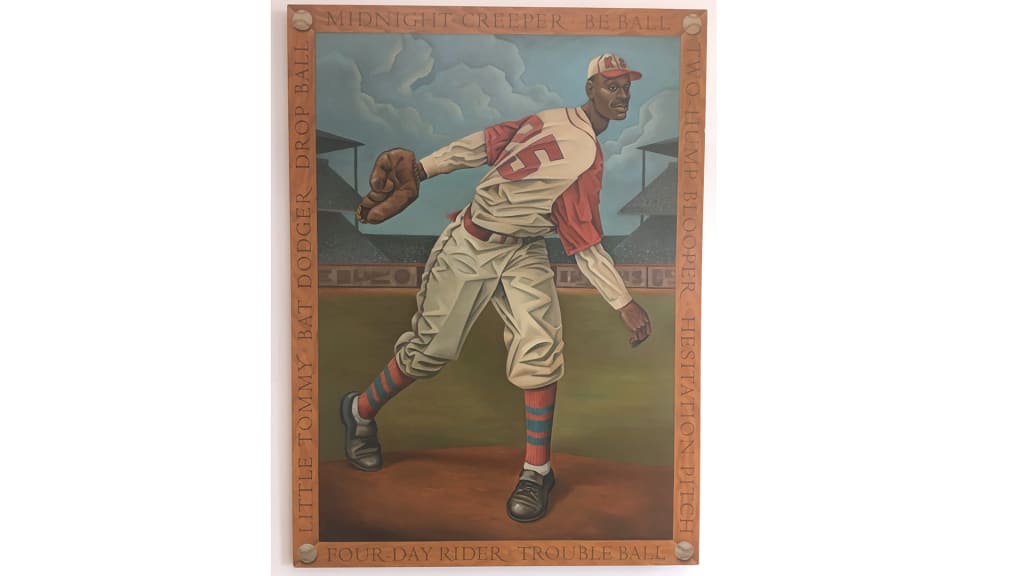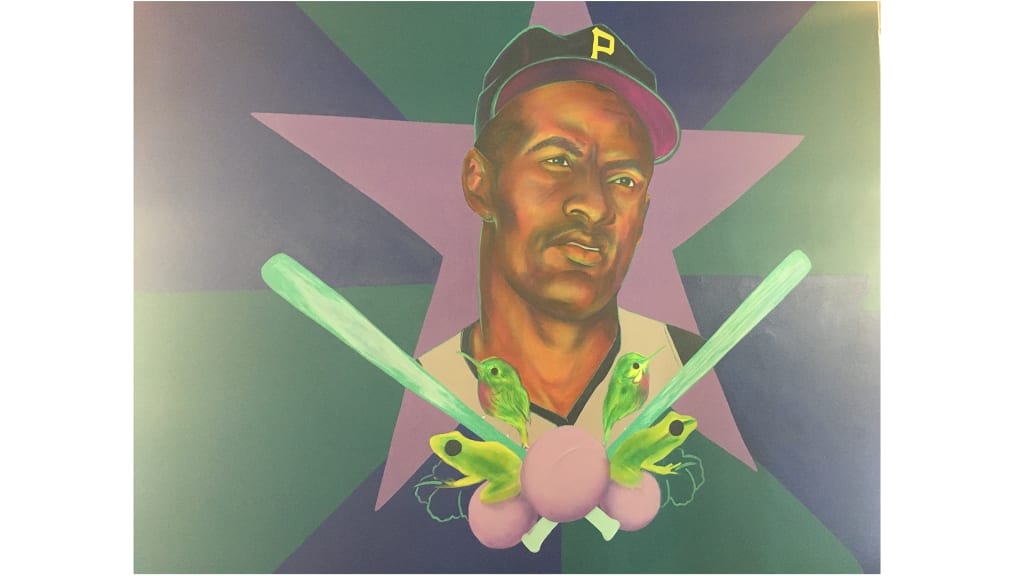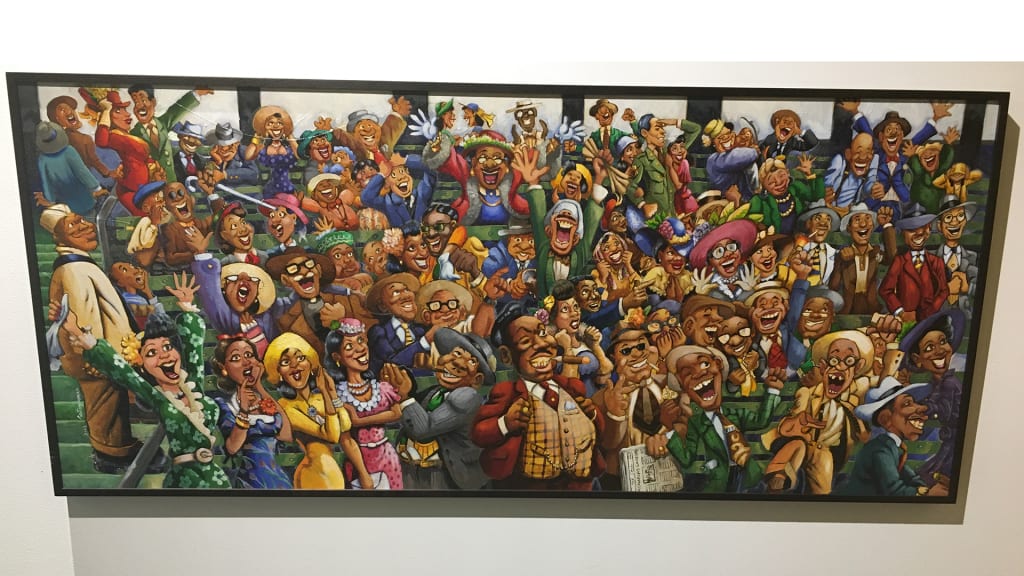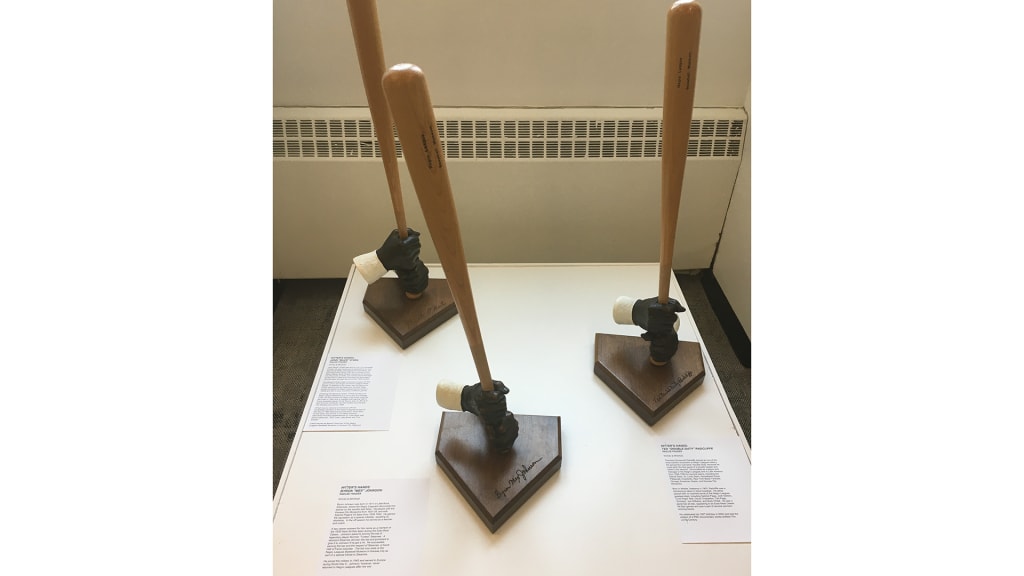DENVER -- There’s a vantage point in Denver where no matter which direction you look, you’ll be overwhelmed by the vibrant, expressive and dominating personality of Satchel Paige.
It’s not an old ball field in the Five Points neighborhood, but McNichols Civic Building, at Civic Center Park, where Shades of Greatness, an exhibit of art from the Negro Leagues Baseball Museum (NLBM) opened Saturday as part of All-Star Week.
Paige dominates the exhibit just as he dominated the Major Leagues in the '20s, '30s and '40s. That’s right, the Major Leagues. In December 2020, in a move capping a year-long celebration of the 100th anniversary of the founding of the Negro Leagues, MLB officially declared the seven leagues making up Negro League Baseball as Major Leagues, incorporating the thousands of Negro League players and all their statistics into the official Major League history and record books.
The exhibit in Denver highlights the impact both the league and the museum have had on baseball and on American culture and history. Bob Kendrick, the president of the NLBM, opened the exhibit with an intimate “fireside chat,” during which he emphasized the way the racial justice issues that hit a tipping point in 2020 revitalized the story and mission of the Negro Leagues and the museum.

“I guess I took a little solace in the fact that after the George Floyd murder awakened so many in this country to some of the ills that were happening in our nation, people started to return to the Negro Leagues Baseball Museum for leadership,” Kendrick said. “When we started this museum in 1990, we wanted to create this place, this nexus, where the conversations in and around race and sports were living. After the Floyd murder, others started to see us in this model, and they started to turn to the museum for that thought leadership.
“We’re a social justice institution, a civil rights institution,” Kendrick continued. “That is what the purpose of this story is all about. It's about diversity, inclusion, equity, and, in the process, creating tolerance and respect, propelling you to accept those who don't think like you.”
Kendrick calls the Negro League players the first “sports activists,” noting the bold steps they took every time they put on a uniform, took the field and ignited the spirit -- and the economy -- of their community. And he sees the NLBM as “a celebration of the power of the human spirit.”

That celebration comes through in jubilant paintings like Keith Shepherd’s “Sunday Best,” capturing the crowd at a Kansas City Monarchs game, the social event of the week, when families set aside their troubles and -- “dressed to impress” -- rejoiced in the fellowship and sportsmanship of the game, as Shepherd put it in a narrative accompanying the artwork.
“I don’t want the only images of me to be the ‘downtrodden’ side of my journey toward citizenship in this country,” Kendrick said. “You've seen slavery, you’ve seen the hoses sprayed by the police, the police brutality that sadly continues to manifest itself to this day. But you can also relate to my success story, and the story of the Negro Leagues is one of the great American success stories.”

Joining Kendrick in conversation was Tyrone Brooks, senior director of MLB’s front office and field staff diversity pipeline program. Kendrick’s role is to build the bench, helping persons of color and women become qualified candidates for key roles in front offices for clubs and the league.
“You have to start somewhere,” Brooks said, noting the 300 hires since launching in 2016. “The program gives people that opportunity to get started, get going with their careers, but also provides resources and tools they need the help themselves to grow further.”
Part of the Museum’s challenge is to make the league’s history alive and relevant as times change, and Kendrick told the crowd that the Negro Leagues story “may be more impactful and more important right now than ever before.”

"Shades of Greatness" is one of six exhibits the museum brings to cities around the country, replicating the model of the Negro Leagues themselves, by following in the players’ footsteps and barnstorming across the country to show people what they’re missing.
“This story embodies the American spirit unlike any story in the annals of American history,” Kendrick said. “It is everything that America prides itself in. It is about pride, it's about passion, it's about perseverance, determination, and the refusal to accept the notion that you're unfit to do anything.”